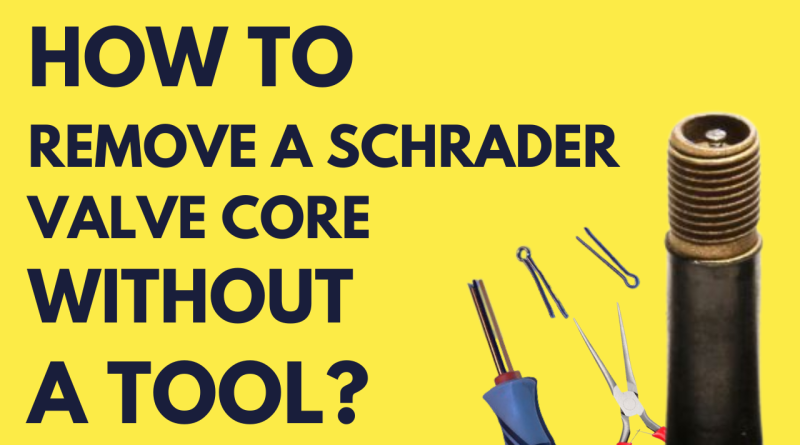How to Remove a Schrader Valve Core Without A Tool
Discovering how to remove a Schrader valve core without a specialized tool is an essential skill, especially when you’re in a pinch with a tire that won’t seat or when you’re doing a suspension service. While having the right tools is ideal, there are times when you simply have to improvise.
So, how do you tackle a Schrader valve without the standard tool, and just how easy is it to do? Let’s take a look..
How to Remove a Schrader Valve Core Without A Tool?
Solution 1 – Thin Nosed Pliers
Most people have a pair of pliers kicking around their home somewhere. This solution is not ideal as it can damage the head of the valve, but if you have nothing else it will do the job. Simply slot the pliers into the valve and twist anti-clockwise to loosen and clockwise to tighten. (see video for full details).

Solution 2 – Plit pin from a brake
My preferred method involves using a split pin from an old brake, commonly found in Shimano and other brands to hold brake pads in place. First, trim the pin to equal lengths using wire cutters. Then, open the pin and insert it into the valve, turning it anti-clockwise to loosen and clockwise to tighten. For added leverage, if necessary, you can insert another pin or nail through the hole in the split pin. Check out the video for a detailed demonstration.

What are Schrader Valves?
Schrader valves, a common sight in the world of cycling and automotive, are known for their robust and straightforward design. Characterized by a wider diameter compared to other valve types, they consist of a core that’s spring-loaded, allowing air to enter but preventing it from escaping. This core is encased within a metal tube, topped with a threaded cap to protect it from dirt and debris. The design is user-friendly, allowing for easy inflation with standard air pumps and gauges found at service stations.

What Are Schrader Valves Used For?
The Schrader valve’s versatility and durability make it the valve of choice in a variety of applications. It’s the standard valve for car tires, offering reliability under the high pressures and varied temperatures encountered in automotive use. Additionally, its straightforward design has made it a staple in the realm of bicycle tires, particularly in mountain bikes and kids’ bikes, as well as in various inflatable objects like air mattresses, prams, and some water sports equipment. Another common use is on suspension air-springs used on mountain bikes.
Schrader VS Presta Valves (Which is beter?)
When it comes to bicycle valves, the Schrader and Presta types stand out, each with distinct features. The Presta valve, often found on road and racing bicycles, is notably slimmer and taller than the Schrader, with a lock nut at the top to open the valve for inflation. This design suits the narrow rims of performance bikes and allows for precise air pressure adjustments. In contrast, the Schrader valve’s wider, more robust build suits a variety of rim types and is more forgiving with the types of pumps and gauges used for inflation.
Many bikes have been converted to tubeless due to the weight-saving and performance benefits, and most of these bikes use Presta valves. However, many people are starting to try Schrader for tubeless as they have a larger hole, allowing air to pass easier and tire sealant to pass through more easily.
Discussion on their Different Applications
The differing designs of Schrader and Presta valves speak to their varied applications in the cycling world. Schrader valves, with their ease of use and compatibility with a wide range of air pumps, are well-suited for casual cyclists, mountain bikers, and in automotive use, where accessibility and durability are key. On the other hand, Presta valves cater to the performance-oriented cyclist. Their ability to hold high air pressures and the fine control they offer in air adjustment makes them the preferred choice for road cyclists and professional racers.




